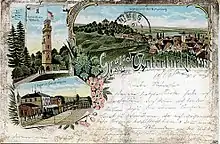| Stuttgart-Untertürkheim–Kornwestheim | ||||||||||||||||||||||||||||||||||||||||||||||||||||||||||||||||||||||||||||||||||||||||||||||||||||||||||||||||||||||||||||||||||||||||||||||||||||||||||||||||||||||||||||||||||||||||||||
|---|---|---|---|---|---|---|---|---|---|---|---|---|---|---|---|---|---|---|---|---|---|---|---|---|---|---|---|---|---|---|---|---|---|---|---|---|---|---|---|---|---|---|---|---|---|---|---|---|---|---|---|---|---|---|---|---|---|---|---|---|---|---|---|---|---|---|---|---|---|---|---|---|---|---|---|---|---|---|---|---|---|---|---|---|---|---|---|---|---|---|---|---|---|---|---|---|---|---|---|---|---|---|---|---|---|---|---|---|---|---|---|---|---|---|---|---|---|---|---|---|---|---|---|---|---|---|---|---|---|---|---|---|---|---|---|---|---|---|---|---|---|---|---|---|---|---|---|---|---|---|---|---|---|---|---|---|---|---|---|---|---|---|---|---|---|---|---|---|---|---|---|---|---|---|---|---|---|---|---|---|---|---|---|---|---|---|---|---|
 | ||||||||||||||||||||||||||||||||||||||||||||||||||||||||||||||||||||||||||||||||||||||||||||||||||||||||||||||||||||||||||||||||||||||||||||||||||||||||||||||||||||||||||||||||||||||||||||
| Overview | ||||||||||||||||||||||||||||||||||||||||||||||||||||||||||||||||||||||||||||||||||||||||||||||||||||||||||||||||||||||||||||||||||||||||||||||||||||||||||||||||||||||||||||||||||||||||||||
| Line number | 4720 | |||||||||||||||||||||||||||||||||||||||||||||||||||||||||||||||||||||||||||||||||||||||||||||||||||||||||||||||||||||||||||||||||||||||||||||||||||||||||||||||||||||||||||||||||||||||||||
| Locale | Baden-Württemberg, Germany | |||||||||||||||||||||||||||||||||||||||||||||||||||||||||||||||||||||||||||||||||||||||||||||||||||||||||||||||||||||||||||||||||||||||||||||||||||||||||||||||||||||||||||||||||||||||||||
| Service | ||||||||||||||||||||||||||||||||||||||||||||||||||||||||||||||||||||||||||||||||||||||||||||||||||||||||||||||||||||||||||||||||||||||||||||||||||||||||||||||||||||||||||||||||||||||||||||
| Route number | 790.11 | |||||||||||||||||||||||||||||||||||||||||||||||||||||||||||||||||||||||||||||||||||||||||||||||||||||||||||||||||||||||||||||||||||||||||||||||||||||||||||||||||||||||||||||||||||||||||||
| Technical | ||||||||||||||||||||||||||||||||||||||||||||||||||||||||||||||||||||||||||||||||||||||||||||||||||||||||||||||||||||||||||||||||||||||||||||||||||||||||||||||||||||||||||||||||||||||||||||
| Line length | 11.5 km (7.1 mi) | |||||||||||||||||||||||||||||||||||||||||||||||||||||||||||||||||||||||||||||||||||||||||||||||||||||||||||||||||||||||||||||||||||||||||||||||||||||||||||||||||||||||||||||||||||||||||||
| Minimum radius | 350 m (1,148 ft) | |||||||||||||||||||||||||||||||||||||||||||||||||||||||||||||||||||||||||||||||||||||||||||||||||||||||||||||||||||||||||||||||||||||||||||||||||||||||||||||||||||||||||||||||||||||||||||
| Electrification | 15 kV/16.7 Hz AC overhead catenary | |||||||||||||||||||||||||||||||||||||||||||||||||||||||||||||||||||||||||||||||||||||||||||||||||||||||||||||||||||||||||||||||||||||||||||||||||||||||||||||||||||||||||||||||||||||||||||
| ||||||||||||||||||||||||||||||||||||||||||||||||||||||||||||||||||||||||||||||||||||||||||||||||||||||||||||||||||||||||||||||||||||||||||||||||||||||||||||||||||||||||||||||||||||||||||||
The Stuttgart-Untertürkheim–Kornwestheim railway (known regionally as the Schusterbahn) is an 11.5-kilometre-long freight bypass in the German state of Baden-Württemberg. The double-track electrified main line connects Untertürkheim with Kornwestheim and serves primarily as a bypass for freight around Stuttgart Central Station (Hauptbahnhof). In the Deutsche Bahn timetable as route 790.11.
History



The name Schusterbahn (“Shoemaker Railway”) refers to the Salamander shoe factory founded in Kornwestheim by a relative of Albert Einstein in 1899. The passenger trains on the route mainly served employees of the shoe factory and the railways, as Untertürkheim and Kornwestheim both contained the homes of many railway workers, and ended originally in Kornwestheim not at Kornwestheim station, but to its east in the old Kornwestheim marshalling yard, the remains of which were demolished after the completion, in 1918, of the new marshalling yard, which is separate from and to the west of Kornwestheim station.
The line was opened on 30 September 1896 with the inauguration of Stuttgart-Münster station in order to bypass the Stuttgart Central Station (Zentralbahnhof). Previously, all freight trains in Stuttgart had to operate through the Central Station, the predecessor of the current Stuttgart Hauptbahnhof (“central” or “main station”), which, like the current station, was a terminus, requiring all through trains to reverse.
At its opening on 1 October 1896, the line was single track, with its foundations and its engineering works already prepared for a second track. Due to increasing traffic, the government made available a million marks for the construction of the second track on 23 January 1902. In the winter of 1901/1902 it was served by some 50 freight and five passenger trains daily. Under several pieces of legislation in 1902, 1903 and 1905, a total of 1.8 million marks was allocated for the project. The second track was put into operation on 23 September 1904.[2]
Route
In Untertürkheim the line branches from the Fils Valley Railway (Filstalbahn) from Plochingen and Ulm and passes through Untertürkheim freight yard. A rail link makes a direct transition to the Rems Railway (Remsbahn) possible from the south, while trains coming from the north must pass through to the freight yard. In Bad Cannstatt, the line passes through the Kurpark (spa park) and over the Neckar on the Stuttgart-Münster viaduct at a height of 30 metres.
The line leaves the Neckar valley passing through the Schnarrenberg Tunnel then the Feuerbach valley is crossed between Rot and Zazenhausen over a second viaduct. On the southern outskirts of Kornwestheim the tracks lead onto the Franconia Railway (Frankenbahn), the Kornwestheim marshalling yard and the Mannheim–Stuttgart high-speed railway.
Structures


The 855 m long Stuttgart-Münster Viaduct over the Neckar was built in 1896 as the König (king) Wilhelm Viaduct as an iron truss structure and replaced in 1985 by a new reinforced concrete structure.
Between Münster and Zazenhausen is the 272 m long Schnarrenberg Tunnel. The tunnel was renovated during 1999–2000, replacing the brick lining with a concrete lining.
The viaduct over the Feuerbach, like that over the Neckar, was replaced in 1980 by a concrete structure parallel with the original construction. Zazenhausen station was moved to the south-west to a new station that is directly below line U 7 of the Stuttgart Stadtbahn. At the end of 2010, the Ebitzweg station on Stadtbahn line U 13 was commissioned, thus establishing a direct connection with the Untertürkheim–Kornwestheim line.
Traffic


Up to 120 freight trains run on the freight bypass railway daily.
Passengers
Regionalbahn service R 11 currently operates only four services on the line on working days using class 426 electric multiple units, two in the morning and two in the afternoon. In addition there is an overnight City Night Line 419 service, which sometimes runs all the way from Amsterdam to Munich (for example, in September and October 2009) without stopping in Stuttgart Hauptbahnhof, but only stopping in Ludwigsburg and Plochingen. On these nights, it runs around 4:00 AM on the Stuttgart-Untertürkheim–Kornwestheim line. It was also served from 1992 to 2006 by one pair of ICE Sprinter service bypassing Stuttgart Hauptbahnhof. In addition, it is also used by some diverted trains (e.g. when access to Stuttgart Hauptbahnhof is blocked) and some short S-Bahn line services.
Notes
References
- Andreas M. Räntzsch (1987). Stuttgart und seine Eisenbahnen. Die Entwicklung des Eisenbahnwesens im Raum Stuttgart (in German). Heidenheim: Uwe Siedentop. ISBN 3-925887-03-2.
- Hans-Wolfgang Scharf (2006). Die Eisenbahn im Kraichgau. Eisenbahngeschichte zwischen Rhein und Neckar (in German). Freiburg (Breisgau): EK-Verlag. ISBN 3-8825-5769-9.
External links
- "weitere Tangentialstrecken in der Region" (in German). Verband Region Stuttgart. Retrieved 2 November 2012.
- "Tunnel portals of the Schusterbahn" (in German). Tunnelportale. Retrieved 2 November 2012.
- "Feuerbach-Viadukt" (in German). Retrieved 2 November 2012.
- "Timetable of 1944" (in German). Retrieved 2 November 2012.